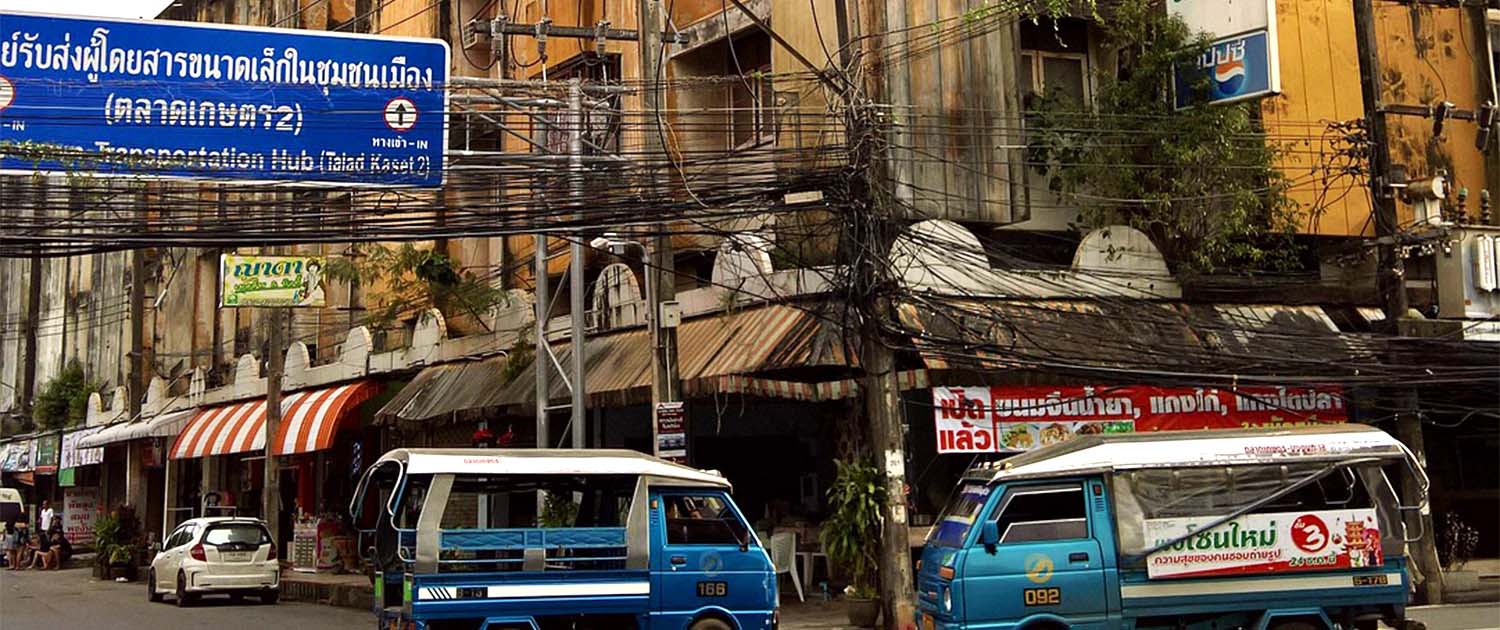Next week, Asia Pacific’s largest international Internet conference, APRICOT 2024, will be held in Bangkok, Thailand. We thought we’d shed some light on the health and resilience of the Internet in the host country for those participating in person or virtually.
Taking a Fixed-focused Strategy
Like many of its ASEAN neighbors, Thailand has expanded its Internet ecosystem considerably in the last seven years, thanks to several long-term national policies and projects — Thailand 4.0, Digital Thailand, and Giga Thailand — that seek to transform it and the region into a technological hub. However, unlike most of its neighbors, Thailand has predominantly focused on improving its fixed broadband network.
One commonly cited project showcasing this focus is the Village Broadband Internet Project, or Net Pracharat (Net for the People), which has expanded the reach of high-speed Internet services through wireless and fixed-line broadband access points to 75,000 villages and counting.
The result of this and other ‘fixed-focused’ strategies has seen Thailand’s fixed broadband performance rise from 34th in 2018 to 11th (as of January 2024) globally, and the number of households with fixed broadband increase from 12.79M subscribers in 2016 to 21.34M in 2022.
Conversely, mobile broadband performance has stagnated — As of January 2023, Thailand’s median mobile download speed was ranked 4th among ASEAN countries and 63rd globally (Figure 1).
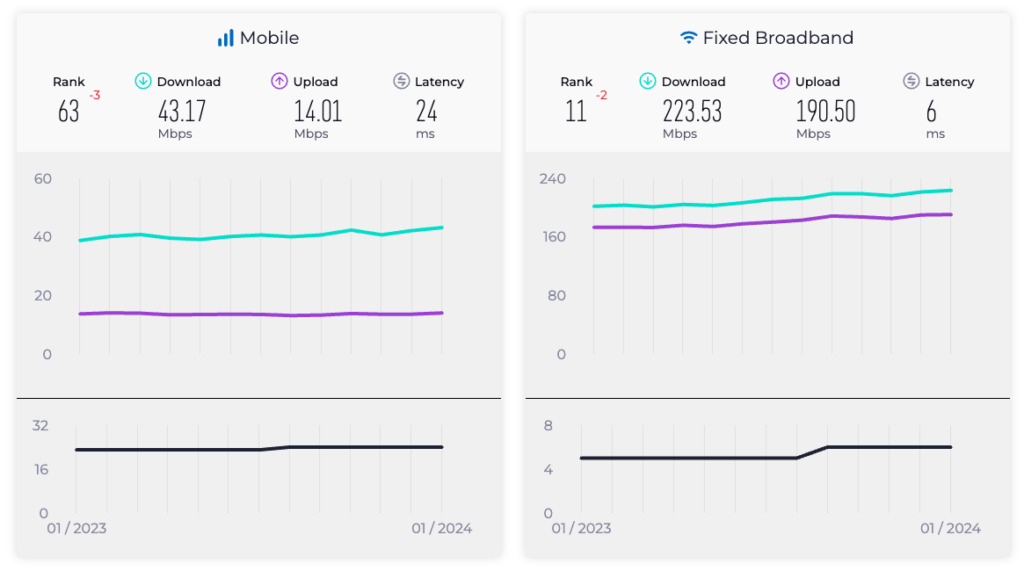
Considering that 83% of the population in Thailand accesses the Internet via mobile, this is a rather large discrepancy that has impacted the country’s overall Internet resilience, which ranks equal third among South-East Asia countries per the Pulse Internet Resilience Index (IRI) (Figure 2).
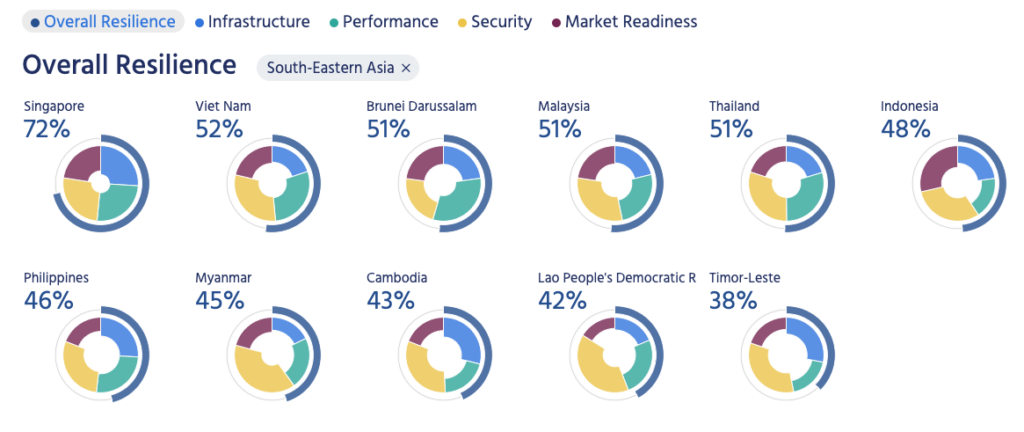
A resilient Internet connection maintains an acceptable level of service in the face of faults and challenges to regular operation. The Pulse Internet Resilience Index compares more than 25 Internet resilience-related metrics categorized under four pillars — Infrastructure, Performance, Security, and Market Readiness.
Understanding Thailand’s Internet Resilience
When we zoom in on Thailand’s IRI profile (Figure 3), we can see that while mobile network performance does lag behind all fixed network performance metrics, it, and the resilience of Thailand’s overall Internet Performance, is not necessarily the most pressing challenge impacting Thailand’s overall Internet resilience.
Instead, two infrastructure (Fiber 10km reach, data centers) and two market readiness (Domain count and peering efficiency) metrics, as well as one security metric (DNSSEC validation), are all below average.
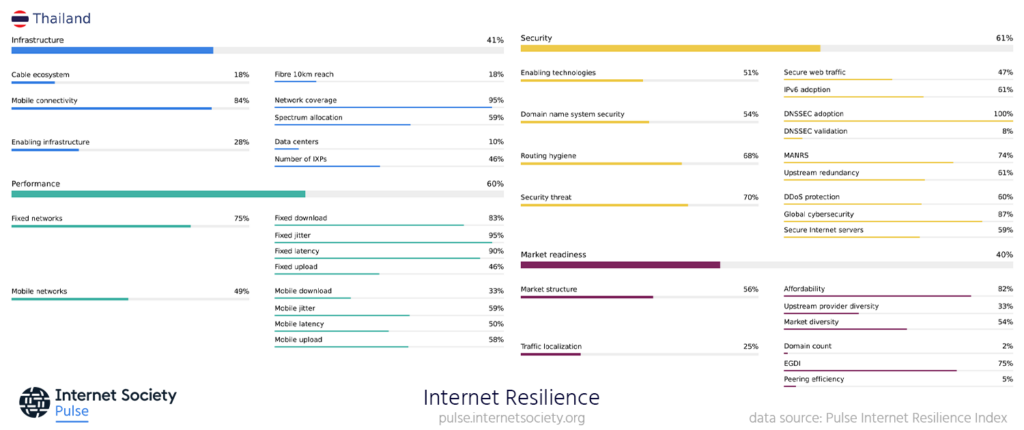
Fiber 10km reach
Fiber-optic cable networks provide high-speed data connectivity but have limited reach to populations outside urban and suburban areas. According to the ITU, only 2.29 billion people (~29%) globally live within 10 km of current fiber-optic cable networks (2021). However, this is not to say they can connect to this.
In Thailand, it’s estimated that 19% of the population lives with 10 km of a fiber-optic cable. However, this figure most likely does not consider recent work to expand fiber to rural areas.
If this is the case, a recommendation would be to develop a public mapping system similar to Canada to show and share up-to-date coverage. This would also help with planning future fiber projects.
Data centers
Data centers have quickly become critical Internet infrastructure, and their importance continues to grow exponentially. This growth is not just to accommodate future technologies — Internet of Things, Large Learning Models (LLMs), and quantum computer technologies — but also cloud, streaming, and gaming services, which are improved by having content stored as close to users as possible.
According to PeeringDB, Thailand has 34 data centers serving its ~72 million inhabitants. In comparison, Singapore, with a population of ~6 million, has 47 data centers.
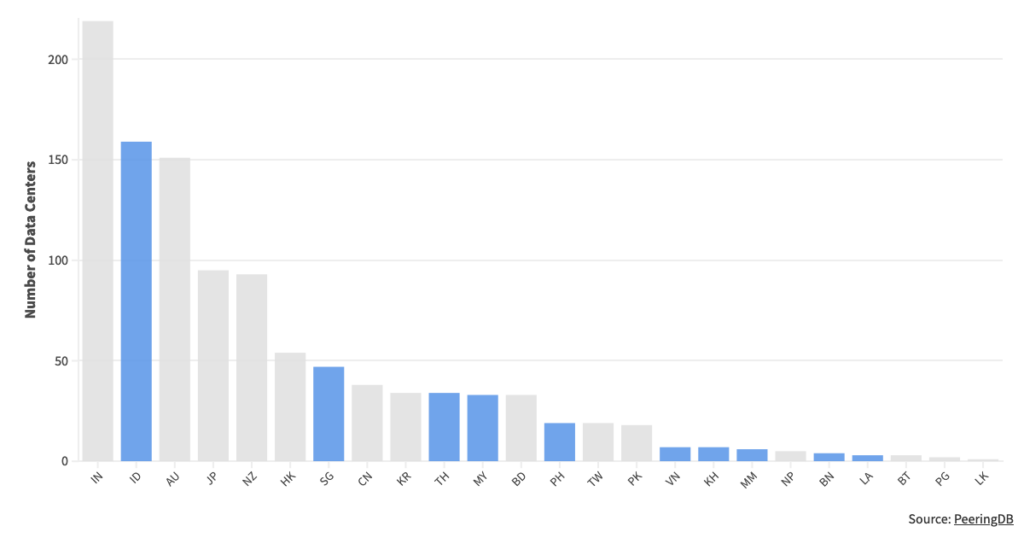
For Thailand to take full advantage of the fiber network it developed to allow it to achieve its long-term digital shift, it will need to increase this number significantly and not just in major cities.
Domain Count
Of all Thailand’s resilience metrics, Domain count is the lowest (2%). According to Domain Tools (Figure 5), there are 76,879 .th domains registered, the fifth fewest of all ASEAN country code Top Level Domains (ccTLDs) and the third-fewest per population ahead of Brunei and Myanmar.
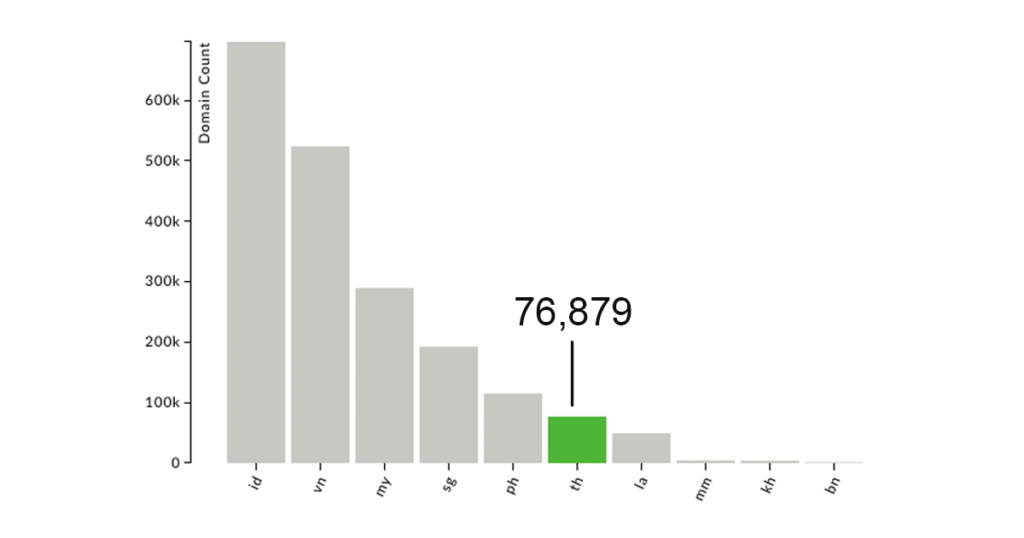
The ccTLD domain/capita measure provides a rough measure of how much local content is produced. Thailand’s low domain/capita ratio indicates there is either a lack of:
- Awareness of .th domains
- Interest in registering sites with a .th domain
- Local content that warrants a .th domain.
Peering Efficiency
Peering efficiency is a ratio of the number of networks (referred to as Autonomous Systems or ASes) peering at Internet Exchange Points (IXPs) versus the total number of allocated ASes in a country.
If we look at the Pulse Country Report for Thailand, we can see that Thailand has 607 assigned ASes, of which 130 peer at one or more of the country’s 12 IXPs (Figure 6).
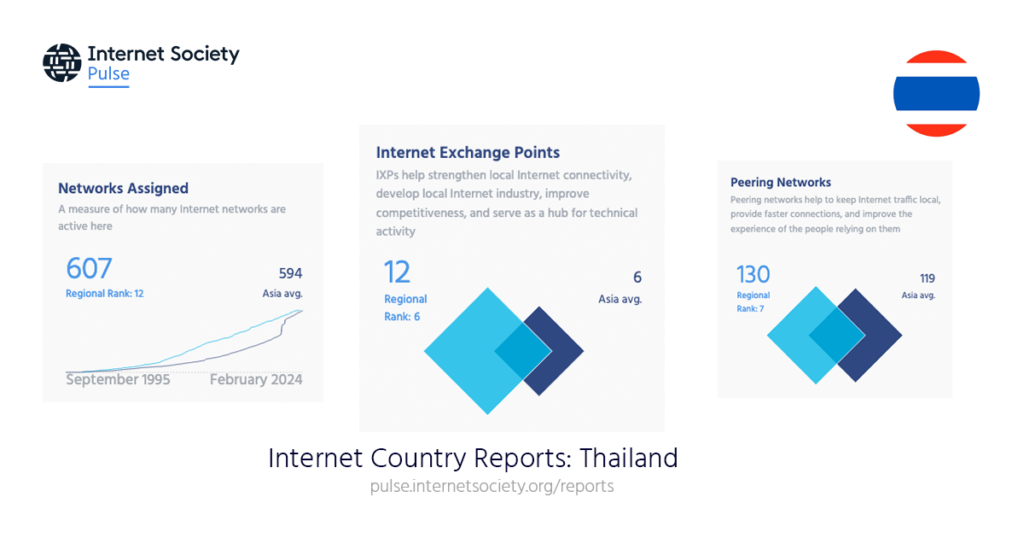
It’s worth noting here the great job that Thailand has done in recent years to establish so many IXPs, which are critical for keeping traffic local instead of sending it via international routes, thus providing better resilience, stability, efficiency, and quality improvements all at a lower cost.
Encouraging more networks to peer at IXPs and establishing more IXPs closer to these networks will go a long way toward improving this metric and Thailand’s enabling infrastructure resiliency but, most importantly, provide the benefits of local peering to these networks and their customers.
| Learn more about the Internet Society’s 50/50 Vision to keep at least half of all Internet traffic in emerging economies local by 2025. |
DNSSEC Validation
By and large, Thailand has done a commendable job establishing its Internet security resilience. The one outlier is Domain Name System Security Extensions (DNSSEC) validation.
The DNS is a critical system that translates human-friendly names (internetsociety.org) into computer-friendly numbers (2001:41c8:20::b31a). DNSSEC secures this information using cryptographic techniques to validate its authenticity, reducing the risk of being tampered with.
Thailand’s ccTLD has adopted DNSSEC, which is a critical part of securing the resilience of the DNS. However, according to APNIC Labs, the percentage of Internet users in Thailand validating DNSSEC is 7.3%, which ranks among the bottom third of Asia Pacific countries. Further, the Pulse Country Report states that only 1% of .th domains are DNSSEC signed.
Validating DNSSEC is one of several best current practices promoted by ICANN’s KINDNS program.
Review, Maintain, and Carry On
The Internet has become an indispensable resource for information, communication, and human connection that has fueled extraordinary economic growth and catalyzed social progress.
As such, we need to ensure that when there are faults or issues, it can maintain an acceptable level of service. Doing so requires a holistic view of the ecosystem that supports the Internet.
Thailand has done an admirable job at increasing its Internet infrastructure in the past decade, with an understanding that this will form the foundation for its long-term digital vision.
By reviewing and addressing areas where it has yet to invest as much time and resources as other areas, it will continue to maintain and preserve this growth and lead in the market.

